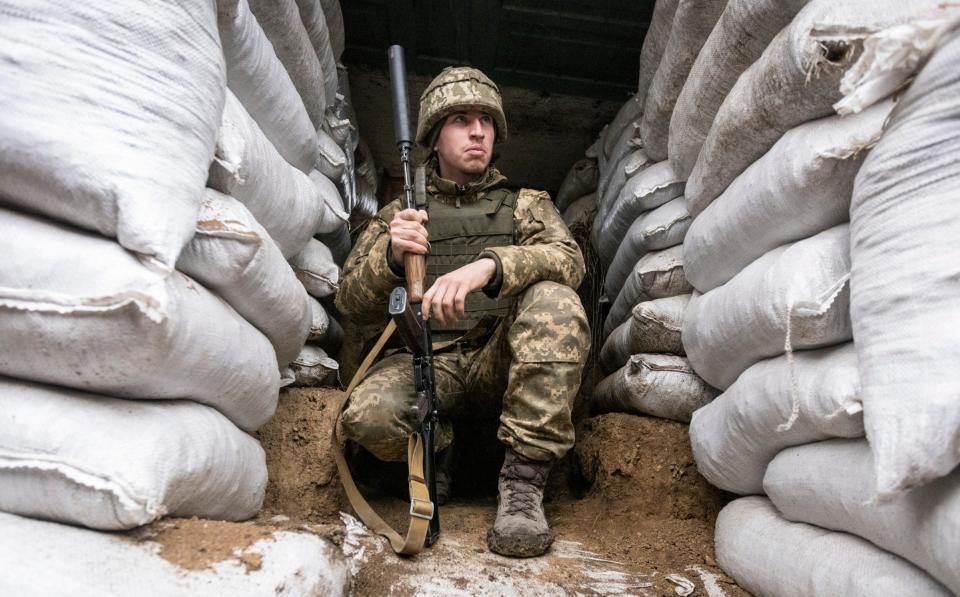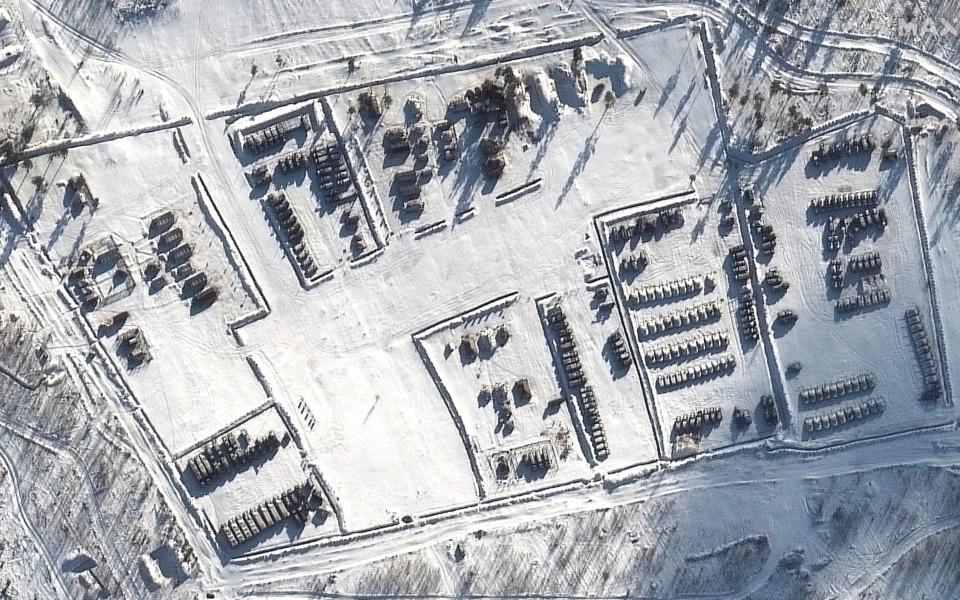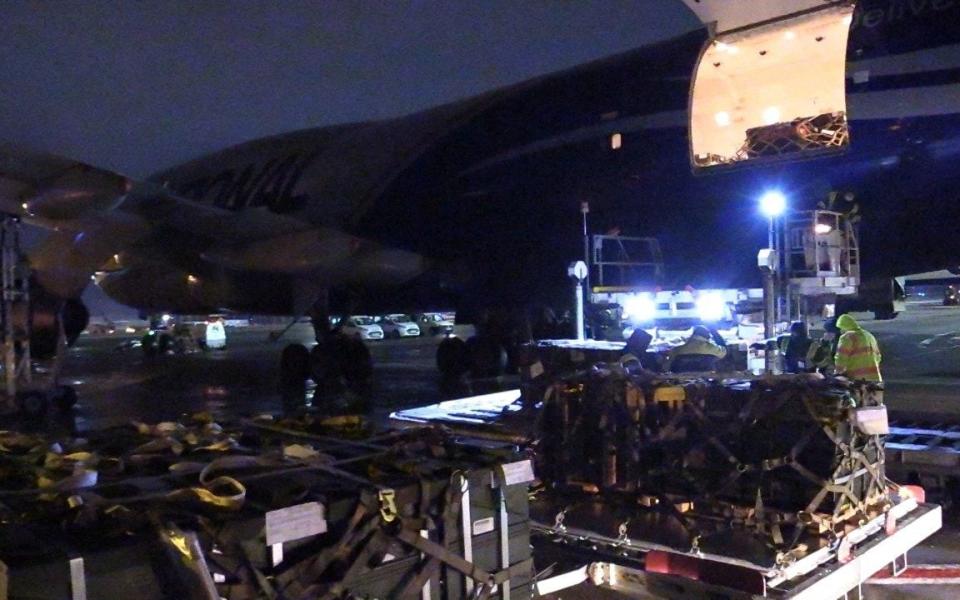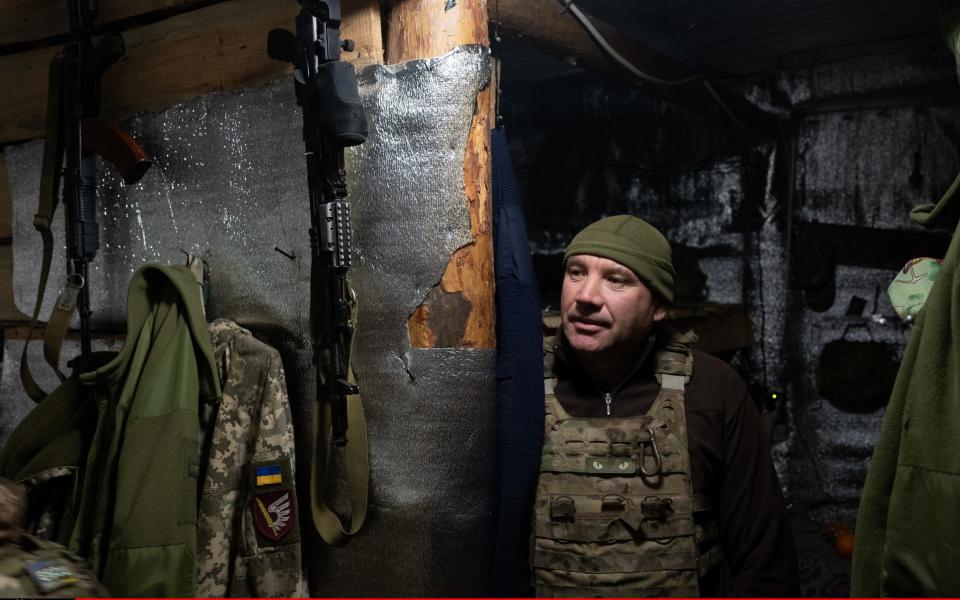'The tanks are here again': Russians watch the troop buildup near Ukraine in real-time

In the snow-covered streets of Maslovka, near Russia’s border with Ukraine, residents no longer look up when a military jet whizzes over their heads. Nor are they alarmed by the sight of two dozen tanks lined up in the railway station’s car park.
The Kremlin has repeatedly denied any plans to invade Ukraine as the West fears, with even state TV channels focusing on Covid concerns instead of war or vilifying Ukrainians as it did ahead of its annexation of Crimea in 2014.
But the situation in Russia’s south-west along the Ukrainian border tells a different story. Recent months have seen a staggering amount of vehicles and heavy equipment shipped across the country - too much to be explained by ordinary military drills. The overall number of Russian troops near Ukraine is now estimated at over 100,000.
And the numbers are still growing. Open-source data published this week pointed to fresh reinforcements sent to the nearby cities of Voronezh and Belgorod while forensic investigations group Conflict Intelligence Team reported a growing number of soldiers in Russia’s Siberia and the Far East receiving orders to move to the west on lengthy assignments.
In the sleepy village of Maslovka on the outskirts of Voronezh region, the constant stream of heavy weaponry and troops no longer raises any eyebrows.

The town usually comprises little more than a dozen wooden cottages, a church, two supermarkets and a few stray cats. Now, the grocery shop buzzes with soldiers in green fatigues and lines of military vehicles rumble through the unpaved streets.
“Just this morning, I saw a truck passing by in my street with military equipment,” Galina, an elderly woman who refused to give her last name, told The Telegraph as she carried a bag of groceries home. “This happens all the time.”
“It feels spooky sometimes,” added Daria Shershneva, a software developer. “You drive home, turn into your street and the first thing you see are tanks and young guys in uniforms warming by a campfire.”
Ms Shershneva said her mother is particularly worried about the threat of war but for younger people the prospect is more abstract.
“I think we’re less anxious. I used to discuss it with friends. Now it’s more like: ‘Tanks are here again’ and that’s that,” she said.
War anxiety in Maslovka sometimes varies depending on the amount of heavy weaponry that locals spot passing through their station, Ms Sheshneva said:
“You do feel uneasy if it’s a lot of it but when it’s not that much, then we’re more or less used to it.”
Maslovka first made headlines last April when trainloads of weapons, tanks, APCs and artillery were spotted there as Moscow accused Ukraine of threatening Russian speakers in its separatist-held east.

Most of the equipment was eventually moved to a shooting range in Pogonovo, just a few kilometres south, where it has remained ever since. Satellite images earlier this week showed a sprawling camp with battleground deployments including tanks and artillery.
In the regional capital Voronezh just a few kilometres north, nothing speaks to any threat of military confrontation across the border: Streets are clogged with traffic in the rush hour, and students pack trendy coffee shops after classes.
Kirill Ponomarev, a local journalist, said people in Voronezh are largely unfazed by the proximity to the war camp in Pogonovo and Maslovka.
“Military men do talk about it among themselves,” he said. “But I think ordinary people don’t feel any tensions: They are mostly worried about their day-to-day issues, especially Covid.”
The current crisis has been compared to 2014 when Russia took advantage of chaos in Kyiv in the aftermath of the Ukrainian revolution and seized Crimea, a strategic Black Sea peninsula.
But that that invasion, which famously did not not involve a single shot, was widely popular in Russia and followed a months-long propaganda campaign that convinced the public Kyiv had been taken over by violent Nazi sympathisers bent on massacring Russian speakers in Crimea and eastern Ukraine.
This time, the spectre of war is barely there at all.

On Russian state television, evening shows are still dominated by domestic news, Mr Putin’s meeting with the Moscow mayor or how to battle omicron.
Just 35 per cent of those surveyed by Russia’s only independent pollster Levada said last month they believed a war with Ukraine was on the cards.

For Maslovka residents who bump into soldiers as they run errands, its confusing.
“When you pass by all this firepower you often think: Where is it going to end up?” Nikita Seleznyov, a 21-year-old student, told the Telegraph, while out shopping.
“But they don’t say anything about it on TV news. Am I afraid of war in Ukraine? To be honest, I don’t have the time to follow what’s going on in the world. But I don’t think anyone wants a war.”

 Yahoo News
Yahoo News 